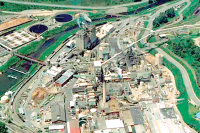Water has a magical draw on us
We are attracted to water. Mountain paths always wind down to water — springs, branches, creeks and rivers. Water is the essence of our very being here in the mountains.
Deep Creek on the North Carolina side of the Great Smoky Mountains National Park probably has as much or more to offer in the way of recreational opportunities than any other watershed in the park. If you want a truly remote backcountry experience, places like Hazel Creek or Eagle Creek would be your choice. But if you’re looking for a variety of directly accessibleoutdoor experiences like tubing, fly fishing, horseback riding, and hiking — as well as sites of historical interest — and a campground that’s one of the best in the Smokies, Deep Creek is the place to be.
Archaeological surveys have determined that the watershed has been the site of human occupation for nearly 8,000 years. Small Cherokee villages were established there within the last 1,000 years as outlying settlements from the old mothertown of Katuah, which was located several miles to the southeast on the north side of the Tuckaseigee River between Bryson City and Cherokee. A friendship wall on the ridge between Katuah and the Deep Creek watershed existed into the middle of this century.
When the Cherokees were being removed from Western North Carolina in 1838, many of them sought refuge in the higher reaches of the Smokies where the Left Fork of Deep Creek drains the southeastern side of Clingman’s Dome. The rock shelter many old-time Bryson City residents believe was the Cherokee martyr Tsali’s last hideout is located up on the Left Fork.
White settlers were established all along the watershed by the middle of the 19th century. When Deep Creek was logged just after the turn of the century, splash dams were built near the logging operations as a way of getting the timber down to the sawmill and rail line at Bryson City. Once the ponds created by the dams were full of logs, they would be opened (sometimes with dynamite) to provide enough water to float the logs downstream. Many of the mountaineers-turned-loggers were agile enough to ride the logs down the narrow, rocky watercourse. The sites of the splash dams can still be spotted if you know just where to look.
Related Items
Bryson City author Horace Kephart — whose Our Southern Highlanders (1913) and Camping and Woodcraft (1906) remain in print as classics in their respective subject areas — lived for a short while with the Bob Barnett family in one of the last houses up Deep Creek in 1910. And until his death in an automobile accident in 1931, he used the old Bryson Place near where the Left Fork enters the main portion of Deep Creek as his summertime camping spot. A permanent marker there commemorates his use of the site.
All but the lowermost three miles of Deep Creek became a part of the national park in the 1930s. Through the years, the Deep Creek Campground situated just inside the park boundary has gained a reputation as the campground-of-choice for those seeking a quiet getaway that’s readily accessible.
Unlike many of the larger campgrounds on both sides of the park, the one at Deep Creek has something for everyone. Younger people can entertain themselves for days tubing along the creek, and a variety of trails — easy, moderate, and strenuous — lead away from the campground along the watershed or up the ridges to Thomas Divide and Clingman’s Dome.
The lower terminus of the main Deep Creek trailhead is at the campground. It’s 14.3 miles to the upper trailhead on the south side of the Newfound Gap Road (U.S. 441), 1.7 miles south of Newfound Gap. Road access at each end of the trail provides an excellent opportunity for those wanting to make a one-way hike by leaving a vehicle at one end or the other. Most choose to hike from U.S. 441 (4,810 feet) down to the campground (1,990 feet), a gradual descent of 2,820 feet.
The average hiking time — allowing for a lunch break — is perhaps seven to eight hours. Many choose to leave out early and make the excursion a leisurely all-day outing. One of the best things about the Deep Creek trail is that it has no crossings of the main creek except in the very highest elevations, where it can be hopped over. Other trails in the region, like those along Forney and Hazel creeks, have numerous places in the higher elevations where fording a sometimes raging torrent numerous times is part of the deal.
Designated backcountry campsites along Deep Creek provide scenic spots to settle down for a night or two and really enjoy the solitude and opportunities for fishing or simply exploring along the main stream or its tributaries. (Overnight hikers must obtain a backcountry use permit, which is available from backcountry permit stations located at all ranger stations and the Oconaluftee Visitor Center near Cherokee.)
(Editor’s note: This article first appeared in a The Smoky Mountain News in 2001)









